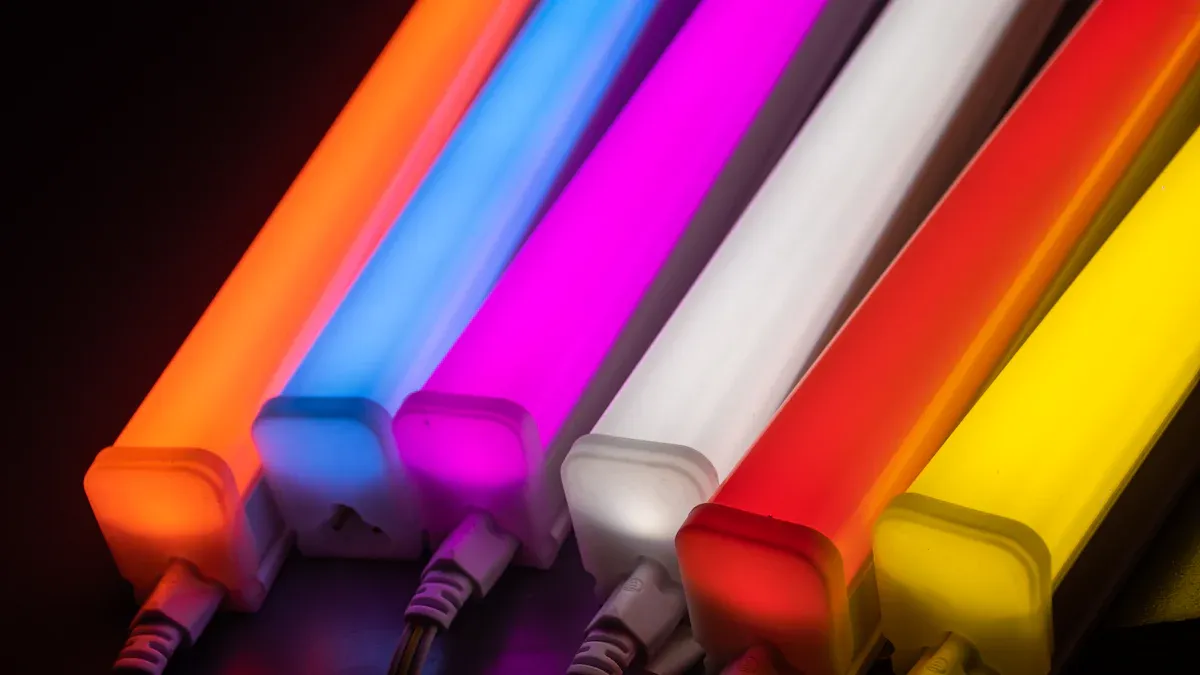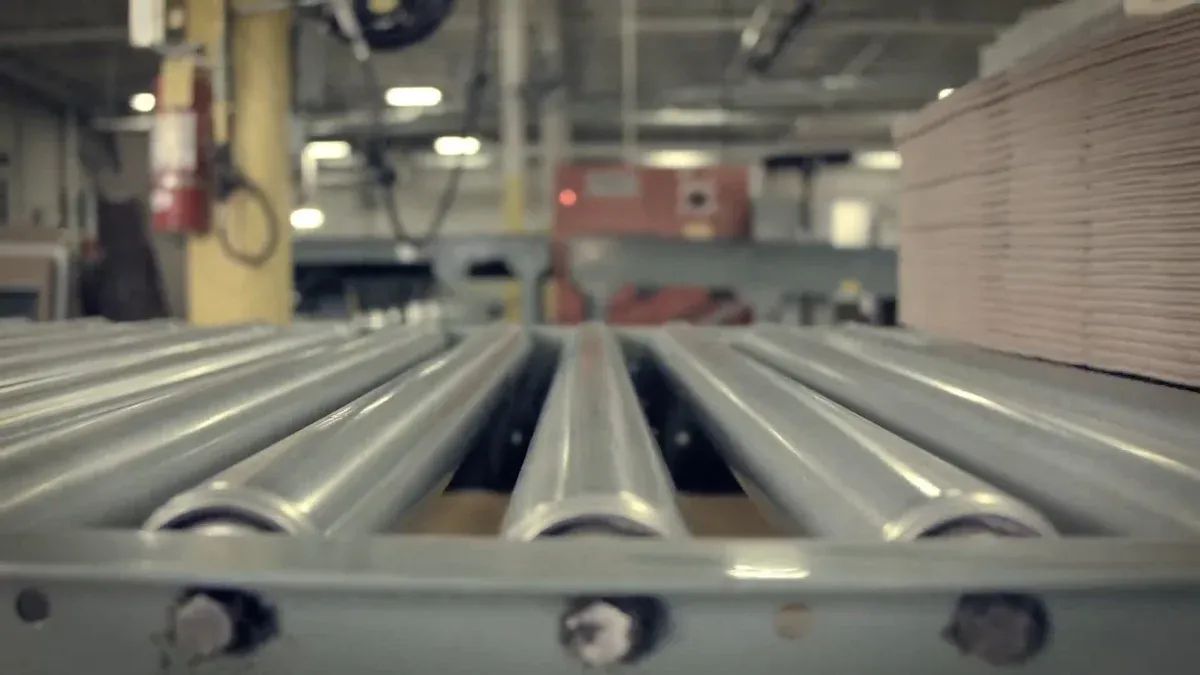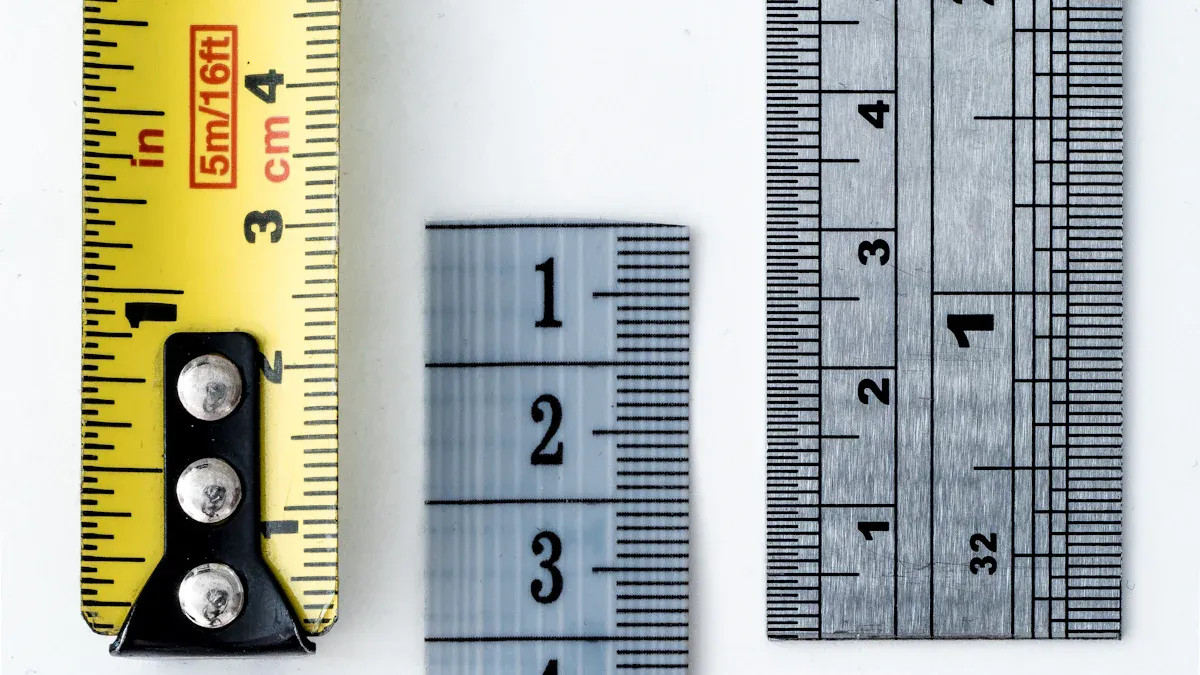How to Measure LED Tubes for Accurate Replacement

Replacing LED tubes requires you to measure LED tubes accurately. A small mistake in measurement can lead to problems, poor performance, or a shorter lifespan for the product. Did you know that LED lights can save up to 44% more energy compared to fluorescent ones? Additionally, ENERGY STAR LEDs consume 75% less energy than standard bulbs. These advantages are only realized when you have the right size. Therefore, measuring LED tubes with precision is essential for optimal performance and energy savings. About us, we emphasize the importance of correct measurements to ensure you get the most out of your LED lighting solutions.
Key Takeaways
Measuring LED tubes correctly helps them fit well and saves time.
Knowing the differences between tube types (T5, T8, T12) helps you pick the right one.
Make sure the tube works with your fixture's ballast to avoid problems.
Use tools like a tape measure and calipers to measure tubes easily and accurately.
Stay safe by turning off power and wearing safety gear during installation.
Why Accurate Measurement Matters
Ensuring Proper Fit and Compatibility
Measuring LED tubes correctly ensures they fit your fixtures well. Wrong sizes can waste time and cause frustration. For example:
Lamp Length: The tube's length should match the space between holders. A T8 4-ft fixture needs a 48-inch tube.
Lamp Pins: Check the pin type. Common ones are G13 bipin for T8/T12 and G5 bipin for T5 lamps.
Electrical Compatibility: Some LED tubes work with old ballasts, but others don’t. Always read the product details carefully.
By considering these points, you’ll avoid returns and install tubes easily.
Avoiding Energy and Performance Issues
Correct measurements prevent energy waste and performance problems. Did you know poor fits can cause errors or mismatches? Here’s how to fix these issues:
Problem | Solution |
|---|---|
Follow regular recalibration plans | |
Sensor Sensitivity Issues | Use better, more accurate sensors |
Spectral Mismatches | Add correction filters |
Using quality materials and good designs also helps. They lower resistance and focus light better, saving energy. Measuring LED tubes properly improves both fit and performance.
Enhancing Longevity and Efficiency
Good measurements help LED tubes last longer and work better. Poorly fitting tubes may overheat or break early. This happens if the tube doesn’t match the ballast or wiring. For example:
Type-A Tubes: These need electronic ballasts and won’t work with magnetic ones.
Hybrid Tubes: These work with both ballasts and direct wiring.
Universal Tubes: These fit magnetic and electronic ballasts but cost more.
Choosing the right tube for your fixture means longer-lasting lights and energy savings. Measuring LED tubes is the first step to achieving this.
Tools and Preparation for Measuring LED Tubes

Essential Tools for Measurement
Before starting, gather tools to make measuring easier. You’ll need:
Tape Measure: Use this to measure the tube’s length.
Calipers: These help check the tube’s diameter.
Flashlight: Lets you see clearly inside the fixture.
Notebook and Pen: Write down measurements and notes here.
Having these tools ready saves time and avoids interruptions. It also ensures accurate measurements of LED tubes.
Preparing the Fixture for Measurement
Getting the fixture ready is as important as the tools. Follow these steps:
Carefully remove the old fluorescent tubes.
Disconnect wires between the ballast and the tubes. Cap unused wires to avoid confusion later.
Connect the live wires to the G13 sockets at one end.
Make sure the fixture is grounded. Close it and start measuring.
Preparing the fixture properly makes the process safer and faster.
Safety Precautions Before Starting
Safety is the most important step when working with electricity. Keep these tips in mind:
Always turn off the power before touching anything. This prevents shocks.
Don’t touch exposed wires or metal parts. This can be dangerous.
Electrical safety is very important. Even if you’re new to this, following these steps can keep you safe.
By staying safe, you can focus on measuring without worry.
Step-by-Step Guide to Measure LED Tubes

Measuring the Length of the Tube
Measuring an LED tube's length is simple. First, get a tape measure. Start at one end of the tube and measure to the other end. Include the pins in your measurement for accuracy. The tube's wattage often matches its length. Longer tubes usually need more wattage. When replacing a fluorescent tube, match the length and wattage to avoid problems.
If you're unsure, measure again before buying a new tube. A wrong-sized tube can cause poor performance or damage your fixture.
Determining the Diameter and Pin Type
The tube's diameter decides its type, like T5, T8, or T12. Use calipers to measure the diameter accurately. Wrap the calipers around the tube and check the size. For example, T8 tubes are 1 inch wide, while T5 tubes are thinner at 5/8 inch.
Next, look at the pin type. Check the ends of the tube to see the pin spacing. Common types are G13 for T8 and T12 or G5 for T5 tubes. Pin spacing is important for a secure fit in the fixture.
Verifying Tube Specifications for Compatibility
Before buying a replacement, check the tube's details for compatibility. First, find out the retrofit type. Here’s a quick guide:
Retrofit Type | Description |
|---|---|
Direct Wire | Remove the ballast and re-wire to Line Voltage. |
Plug-N-Play | Works with most electronic ballasts; easy to install. |
Hybrid | Works with or without a ballast; very simple to use. |
Also, measure the tube's width to confirm its type. Check the pin spacing to match the base type. Make sure the tube works with shunted or non-shunted sockets. These steps help you pick the right LED tube for your fixture, ensuring it fits well and works great.
Understanding LED Tube Types and Compatibility
Common Tube Types (T5, T8, T12) and Their Dimensions
When picking a new LED tube, knowing T5, T8, and T12 differences helps. These types differ in size, energy use, and where they’re used. Here’s a simple comparison:
Feature | T5 | T8 | T12 |
|---|---|---|---|
Size | 5/8-inch diameter | 1-inch diameter | 1.5-inch diameter |
Efficiency | Up to 100 LPW | 80-90 LPW | 50-70 LPW |
Energy Consumption | 27W per lamp | 32W per lamp | 40W per lamp |
Lifespan | 20,000+ hours | 24,000 hours | 12,000-15,000 hours |
Uses | High-bay spaces, retail | Offices, schools, hospitals | Older warehouses, factories |
T5 tubes are small and very efficient, great for modern areas. T8 tubes are common and work well in offices or schools. T12 tubes are bigger, less efficient, and found in older fixtures. Always measure LED tubes to ensure they fit your fixture.
Ballast-Compatible vs. Ballast-Bypass Tubes
There are two main LED tube types for installation: ballast-compatible and ballast-bypass. Here’s how they compare:
Ballast-Compatible: These work with current ballasts. They’re easy to install, like plug-and-play. However, they rely on the ballast’s condition.
Ballast-Bypass: These need the ballast removed or bypassed. Installation takes more effort but gives better performance and less upkeep.
Feature | Ballast-Compatible LED Tubes | Ballast-Bypass LED Tubes |
|---|---|---|
Installation | Requires rewiring | |
Performance | Affected by ballast lifespan | Uninterrupted performance |
Flexibility | Can revert to fluorescent bulbs | Cannot revert once rewired |
If you want easy setup, choose ballast-compatible tubes. For better long-term results, pick ballast-bypass tubes.
Matching LED Tubes to Fixture Requirements
To make sure the LED tube fits, match it to your fixture. Focus on these details:
Specification | Details |
|---|---|
Voltage | 120-240V AC, 50-60 Hz |
Brightness | |
Color Temperature | 5000K |
Installation | G13 Medium Bi-Pin |
Lifetime | 25,000 hours |
Check the fixture’s size and pin type to avoid problems. Also, see if your fixture uses shunted or non-shunted sockets. This ensures the LED tube fits well and works properly.
Tip: Always check the package details to avoid mistakes.
Common Mistakes to Avoid When Measuring LED Tubes
Confusing Tube Type or Size
A big mistake is mixing up tube types or sizes. Not all LED tubes are the same. For instance, T5, T8, and T12 tubes vary in size and length. If you don’t measure carefully, the tube might not fit. Use a tape measure to check the length. Use calipers to measure the diameter. Also, check the pin type. T8 and T12 tubes often have G13 pins, while T5 tubes use G5 pins. These steps help you pick the right tube every time.
Ignoring Fixture and Ballast Compatibility
Another error is not checking if the tube matches the fixture. Some LED tubes work with ballasts, but others need a bypass. Skipping this step can cause the tube to fail or harm the fixture. First, find out if your fixture uses a magnetic or electronic ballast. Then, choose the correct tube type, like ballast-compatible or ballast-bypass. This simple check avoids problems and saves money.
Forgetting Electrical and Safety Rules
Safety is key when working with LED tubes. Ignoring electrical rules can cause short circuits or bad performance. Make sure the tube meets safety standards. For example:
Standard | What It Does |
|---|---|
47 CFR Part 15 | Ensures LED products don’t cause interference. |
10 CFR Part 430 | Sets energy and safety rules for LEDs. |
UL 8750 | Covers safety and performance for LED items. |
Always check for these standards. Products with UL approval are safer and better. Follow safety tips like turning off power and wearing gloves. These steps make measuring LED tubes safe and easy.
Measuring LED tubes correctly is important for a good fit and performance. Proper measurements prevent problems and bring benefits like saving energy and lasting longer. For example:
Feature | LED Tubes | Traditional Lights |
|---|---|---|
Energy Use | Use less electricity | Use more electricity |
Lifespan | Last 2-5 times longer | Wear out faster |
Environmental Impact | Have dangerous materials |
Using LED tubes can cut energy costs by up to 80%. It also helps the environment by reducing waste. Always check your measurements and fixture type before buying new tubes. This ensures they fit well and give bright, efficient light for a long time.
Tip: Type A LED tubes are simple to install without ballasts. They save money and are great for eco-friendly users.
FAQ
What if my LED tube doesn’t fit the fixture?
Check your measurements again. Make sure the tube’s length, diameter, and pin type match the fixture. If it still doesn’t fit, the fixture might not work with that tube type. Look at the manufacturer’s guide or ask a professional for help.
Can I use any LED tube to replace a fluorescent one?
No, not all LED tubes work with fluorescent fixtures. You must match the tube type (T5, T8, or T12), pin type, and ballast compatibility. Always check the details before buying to avoid problems.
How can I tell if my fixture uses shunted or non-shunted sockets?
Look at the socket’s wiring. Shunted sockets have one electrical path, while non-shunted ones have separate paths. If you’re unsure, test with a multimeter or ask an electrician for help.
Are ballast-bypass tubes safe to install?
Yes, but only if done correctly. You need to remove or bypass the ballast, which requires rewiring. Always turn off the power and follow safety rules. If you’re unsure, hire an electrician to do the job.
What’s the difference between 3000K and 5000K color temperatures?
Color temperature changes how the light looks. A 3000K tube gives warm, yellow light, good for relaxing spaces. A 5000K tube gives bright, white light, great for work areas. Pick one based on your room’s needs.
Tip: Keep your old tube when shopping for new ones. It helps you compare sizes and details easily.
See Also
Measuring LED Tubes: Choosing The Best Replacement Options
Your Complete Guide To Switching From Fluorescent To LED
A Detailed Manual For Converting Fluorescent To LED Lighting

